Few ball python morphs are as unique as the Spider.
Spider ball pythons are easy to identify because of their thin black bands and white speckling. No two morphs have the same markings, but they all share reduced striping and spotting.
Unfortunately, the same gene that causes spider patterns also leads to neurological issues. These issues cause head twisting and a loss of coordination. They are known as “spider wobble” or “wobble syndrome”.
If you decide that you want to buy a spider morph ball python, then continue reading. We share in-depth tips on their health, husbandry, handling, and more…
What Is A Spider Ball Python?
Spider ball pythons are a type of ball python morph. They were first bred in 1999 and quickly became popular because of their cobwebby scale pattern and smooth coloration.
Their instantly recognizable spider pattern makes them highly sought after by hobbyist and professional snake keepers. These pythons can have bold spider patterns or almost no pattern, depending on their breeding.
Even today, they are widely bred and beloved by enthusiasts around the world.
The spider morph is a dominant trait, meaning only one parent needs to carry a copy of the gene for the pattern to be expressed in its offspring. The spider trait will always show up. This makes it possible for spider ball pythons to come in an enormous variety of colors and markings:
- Leopard spider
- Albino spider
- Bumblebee or killer bee
However, this morph comes with some controversy.
One third develop a neurological condition called the “spider wobble”.
Affected snakes have trouble balancing, poor coordination, and will twist their head in a pattern known as corkscrewing. Wobble syndrome may make it difficult or impossible for a snake to perform its everyday natural behaviors like climbing and feeding.
Some herpetologists have called for a ban on this morph because of its potential health and welfare issues. However, these morphs are still popular and can be purchased from most breeders.
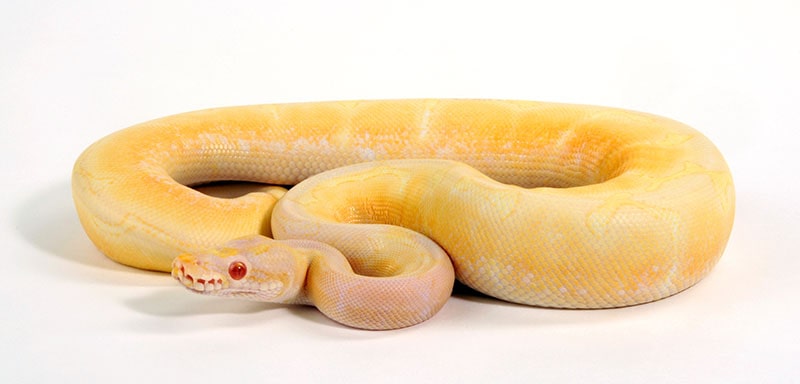
What We Like About Spider Ball Pythons
Pros
- Unique, iconic pattern that is different for every snake.
- Widely available and reasonably priced for a designer morph.
- Docile species that is easy to care for.
Cons
- One third have mild to severe neurological health issues.
- Hobbyists are calling for spider pythons to be banned.
- Breeding two spider morphs together will create some nonviable eggs.
Spider Morph Markings and Appearance
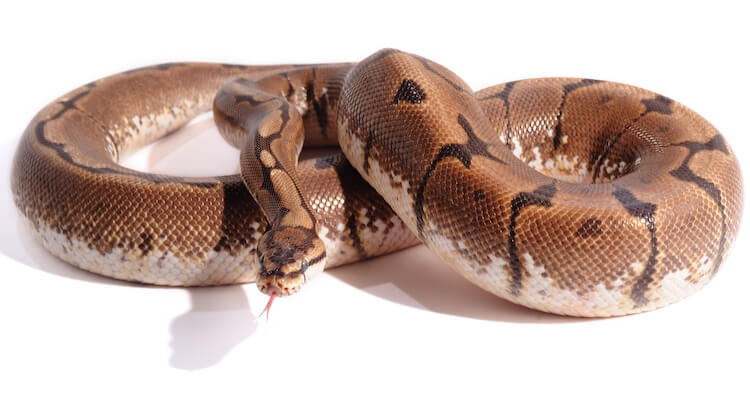
The name “spider” comes from the spiderweb appearance of this morph’s pattern. Unlike other morphs, like banana and albino, the spider morph has the same color as a regular, wild-type ball python. Instead, this morph is a pattern morph. It affects the black bands of a ball python.
Wild-type pythons have thick, regular black or brown bands. Spider ball pythons have very thin, connected black bands along their sides and back. This distinctive spider pattern is unique to this morph and is a good way to identify them.
The pattern is the result of hypomelanism. This happens when the snake produces lower levels of melanin – a brown and black pigment that leads to the typical black bands on this snake.
Spider pythons differ in size depending on their sex.
Males and females hatch out at 10-17 inches, but males only reach 2-3 feet at maturity. Females can grow up to 5 feet.
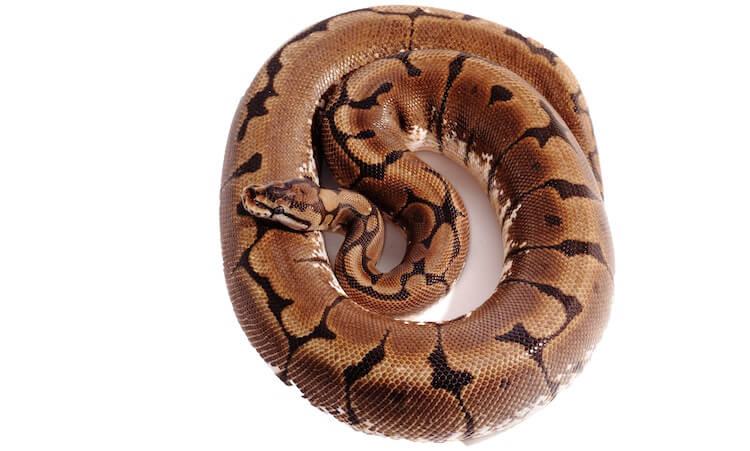
Spider Ball Python Care Sheet
When you first bring home your python, do not expect it to start exploring its habitat immediately. Leave your snake alone in its tank for three days to let it adjust to its new surroundings.
Ball Pythons that are scared or nervous will curl up into a ball to protect their head and neck. They may also hiss or wrap tightly around an object.
After this time, you can start slowly interacting and work up to handling. You may find that your snake is comfortable with being out of its enclosure.
Positive interactions between you and your snake early on will help it adjust quickly.
Spider ball pythons are shy like wild-type Ball pythons. However, those affected with a wobble may be more prone to stress and frustration. It is important to know the temperament of your morph.
Diet
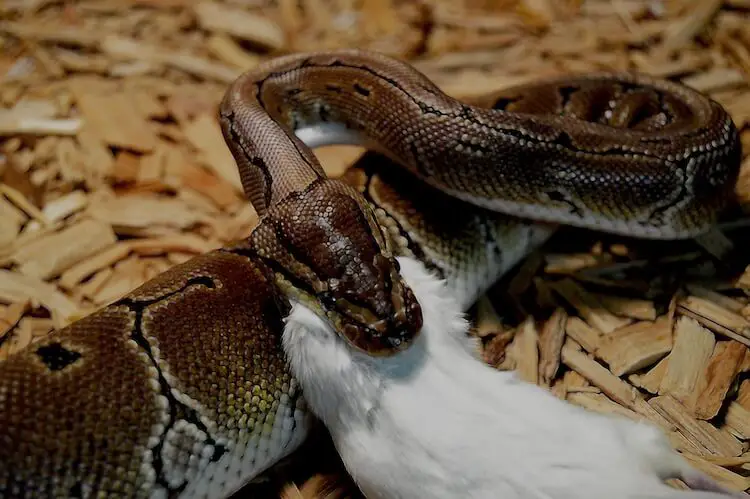
Ball pythons in the wild mainly hunt rodents and birds. Males, which are better climbers, typically hunt more birds, while females hunt more rodents. Pythons are true carnivores and do not eat plants.
They are ambush predators, meaning they sit motionless and wait for prey to walk past. After a quick strike, they wrap around their prey and use their powerful coils to suffocate it before swallowing it whole.
Ball pythons eat relatively infrequently as they are not active hunters.
Growing juveniles need to eat once per week, while most adults only need to eat once every two weeks.
The diet of a spider ball python is no different than any other ball python.
Feed your python pre-killed rats or mice. What you feed will depend on their size. Prey should be no larger than the widest point of your snake’s body.
Spider ball pythons affected by moderate wobble syndrome may have trouble striking prey accurately. For moderate cases, use tongs to hold the mouse or rat steady. If it still misses, try moving the prey closer or gently bumping it against your snake’s mouth. In severe cases, they may not be able to eat at all.
Always keep a bowl of clean water in with your python.
Wobble Syndrome and Health Issues
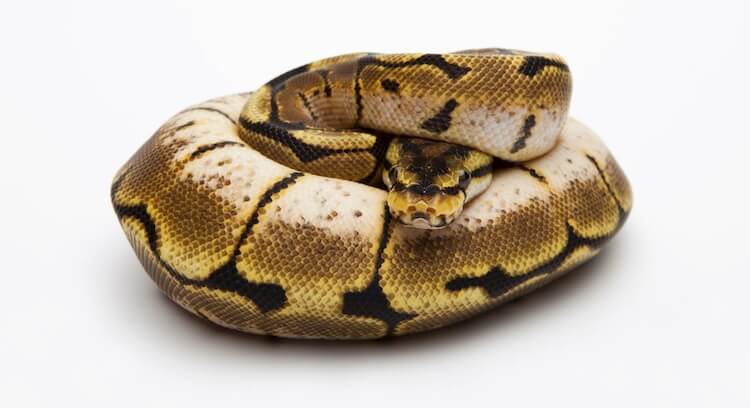
Unfortunately, there is no way to breed the spider ball python without the wobble trait. The spider pattern and neurological issues are genetically linked. This means that every ball python with the spider pattern will have some degree of wobbliness.
Spider wobble has two main symptoms of corkscrewing and swaying.
Corkscrewing is when the snake rotates its head and neck in a twisting motion and may turn its head upside down. Swaying can be a slight side-to-side movement of the head or a full-on shaking of the head and upper body.
There is no way to predict the severity of wobble syndrome.
Some spider ball pythons are hatched with a bad wobble, while others develop it (or lose it) periodically. Stressful or exciting events like feeding or handling usually make the wobble temporarily worse.
To keep the wobble from worsening, minimize handling and keep your snake in a low-stress environment. Using a tub with opaque sides, as opposed to a clear glass tank, is a good idea.
While wobble syndrome can be severe, spider ball pythons appear to live just as long as normal ball pythons. They also suffer from typical ball python health problems such as mites, respiratory infections, and retained shed.
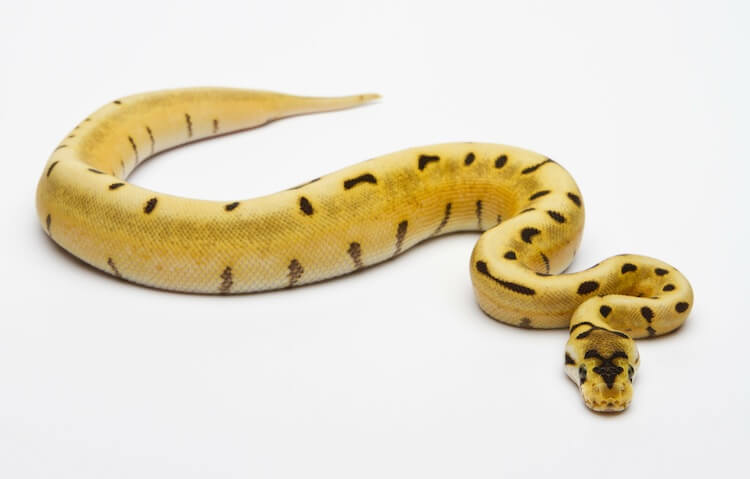
Enclosure
Wild ball pythons are native to the grasslands and forests of Central and West Africa.
They are slow-moving snakes that thrive in a terrarium.
There is a common myth that they can be kept in small tanks because they are mostly sedentary. While it is true that they do not need a very large terrarium, spider ball pythons still need room to stretch out. They are more active than many people realize.
Adults should be housed in a 60-gallon plastic or PVC enclosure with opaque sides. If you already have a glass tank then add lots of hides and cover to help make it feel secure.
Ball pythons need a basking lamp for 12 hours a day to mimic a daytime/night-time cycle. Position the lamp over one side of the tank to create a hot spot; this helps your snake digest food and keep up its metabolism.
These snakes like warm temperatures and moderate humidity.
The hot spot should be between 88-92°F and the cool side of the tank should remain between 77 to 82°F. Although temperatures can dip lower at night, use a ceramic heat bulb to keep the ambient temperature above 72°F.
Humidity should be between 50-60%, which is usually maintained through evaporation from the water bowl.
Topsoil, cypress mulch, or reptile carpet are all great substrates for spider ball pythons. They don’t burrow, so there is no need to layer substrate deeply. Use three inches of clean, compacted substrate to cover the entire bottom of the tank.
Avoid cedar and pine wood shavings, which are toxic to snakes.
Typical Behavior
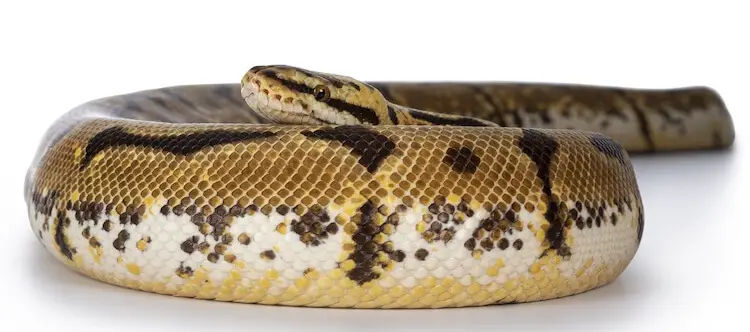
Spider ball pythons are docile, friendly snakes that are most active at dawn, dusk and night.
They prefer to live on their own and only pair up to breed from September to December. After breeding, females remain with the eggs to incubate them, but once the babies hatch, they will leave to live on their own.
Ball pythons will open their mouths and hiss as a warning if they feel threatened.
If bothered further, they will curl up into a tight ball until left alone. This defensive behavior is what led to their name.
Their calm temperament and lack of aggression make them especially popular among beginner snake owners.
Your python will likely spend a lot of its time curled up in a hide box. While you may not see much of your snake during the day, it will start to be more active as soon as the lights are turned off. They enjoy climbing and will actively scale and explore décor or branches in their enclosure.
Most ball pythons are easy to handle and adapt quickly to being out and about.
However, the mild stress of being handled may sometimes cause the “wobbling” of some spider ball pythons to temporarily worsen. Whether or not a spider reacts to handling varies on a case-by-case basis. Some are fine with being held, while others are not.
If at any point your snake starts to corkscrew or sway, return it to its enclosure.
How Much Is A Spider Ball Python?
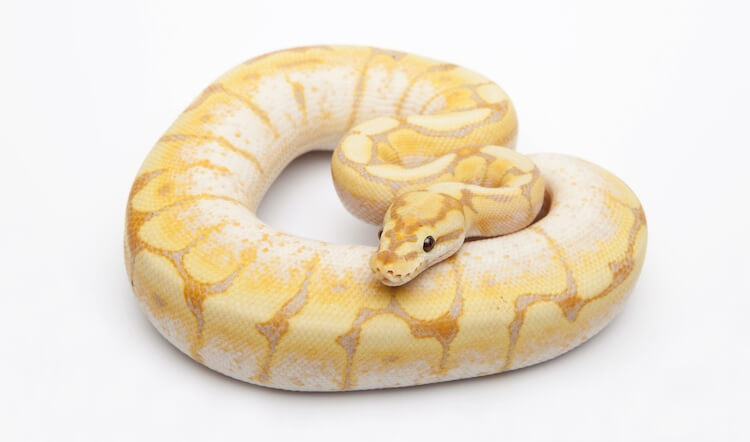
The price of a spider ball python morph varies based on its genetics.
The spider pattern is a dominant trait, meaning it can also be mixed and matched with many other morph.
A basic spider morph usually costs between $250 and $400. Though, specialty morph blends like bumblebee axanthics or leopard spiders can sell for over $5,000.
They are in high demand. They are specially bred by many breeders, with many different morph crosses for sale. These snakes can be found for sale online and at reptile shows.
It is important you see this snake before buying one. This is especially helpful for spider ball pythons because you can judge the severity of their wobble.
Even with a slight or moderate wobble, a healthy spider python should have glossy scales, clear eyes, and be curious about its surroundings. It should also have a good appetite and a slightly triangular body (when viewed from the front) with well-developed muscles.
| Species Facts | |
|---|---|
| Common Name | Spider Morph |
| Scientific Name | Python Regius |
| Price | $250 to $400 |
| Size | 3 – 5 feet long |
| Lifespan | 20 to 30 years |
| Diet | Rodents |
| Tank Size | 60-gallon tank |
| Humidity & Temperature | Temperature: 77 – 92°F Humidity: 50 – 60% |
| Popular Alternatives | Corn snakes, milk snakes and king snakes. |
Summary
The spider ball python is a unique and beautiful morph whose popularity has continued to climb since it was first bred in 1999.
Spider morphs have very thin, connected black bands. These cobweb-like markings have made them a popular snake with ball python breeders and hobbyists.
However, the genetic ‘wobble syndrome’ associated with the spider morph has caused controversy. The neurological symptoms will include corkscrewing and swaying. Every spider morph will have some degree of wobbliness, so there are still debates over whether breeding them should be banned.
All ball pythons are docile and easy to care for. They can be kept in a 60-gallon tank as an adult, provided you include a basking bulb, large water bowl, and plenty of hides.
Are you hooked on spider ball pythons or feel they should be banned? Let us know below.

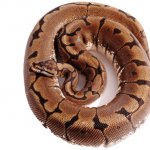
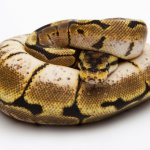
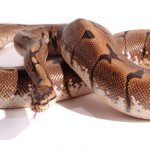
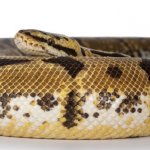
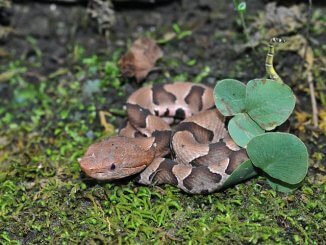
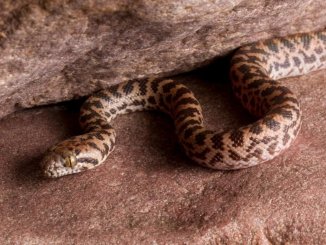
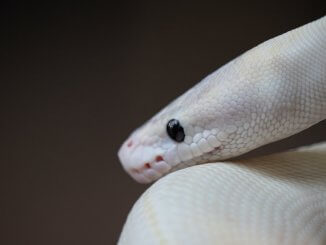

Spider ball pythons should not be banned, they are like all snakes and Perry damn cool, as long as you take good care of them they will be fine